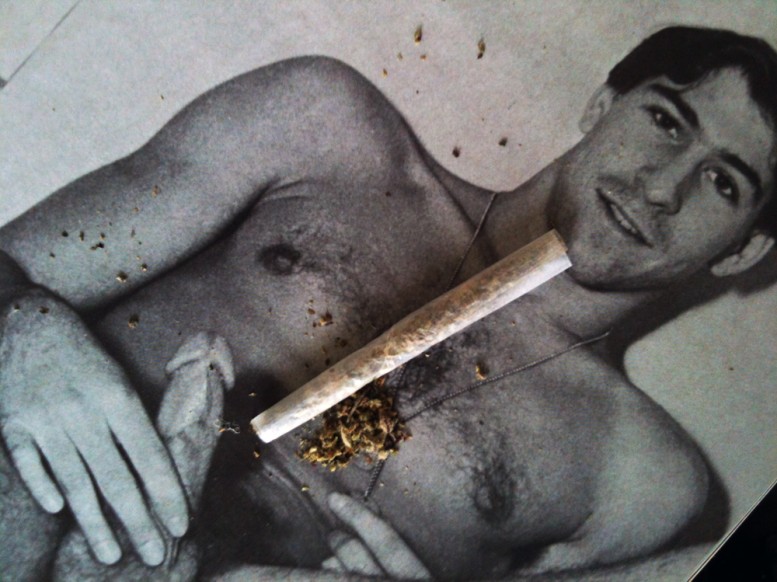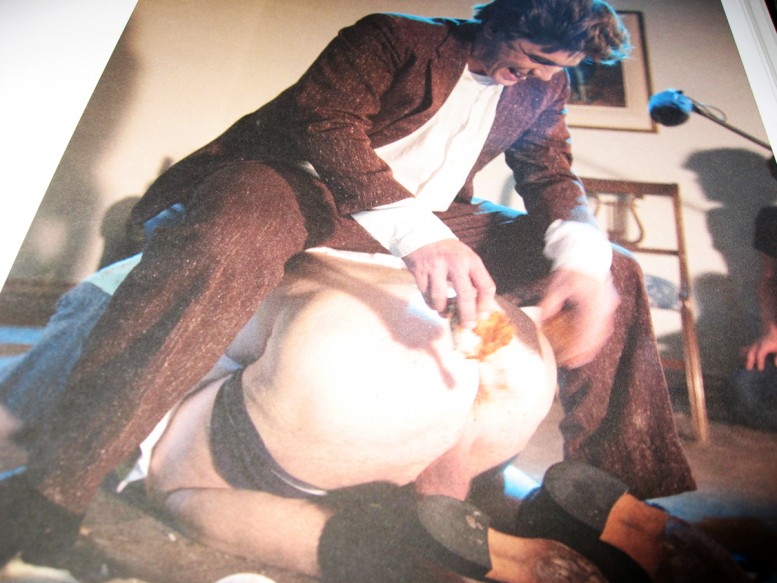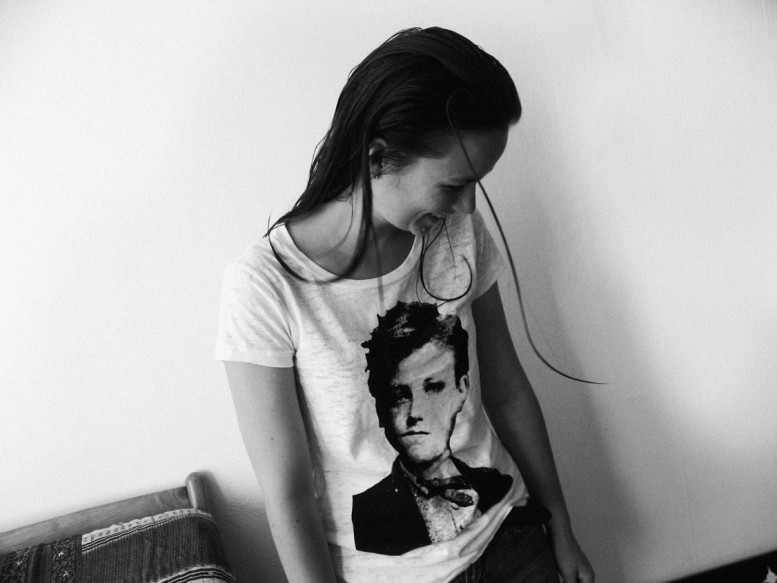Sprüth Magers London presents a solo exhibition of work by Jenny Holzer. The American artist finds ways to make narrative a part of visual objects, employing an innovative range of materials and presentations to confront emotions and experiences, politics and conflict. Entitled Sophisticated Devices, this exhibition provides a survey of Holzer’s practice, encompassing her spray paint canvases, granite benches, LED works, painted signs, and cast plaques. Sophisticated Devices is on view until July 28 at Sprüth Magers, 7A Grafton Street, London
Ida Applebroog @ Documenta (13)
An exhibition view of Ida Applebroog's installation entitled Monalisa on view at Documenta (13) in Kassel, Germany until Setember 16
Adarsha in Her BMW
Brett Whiteley’s London Years
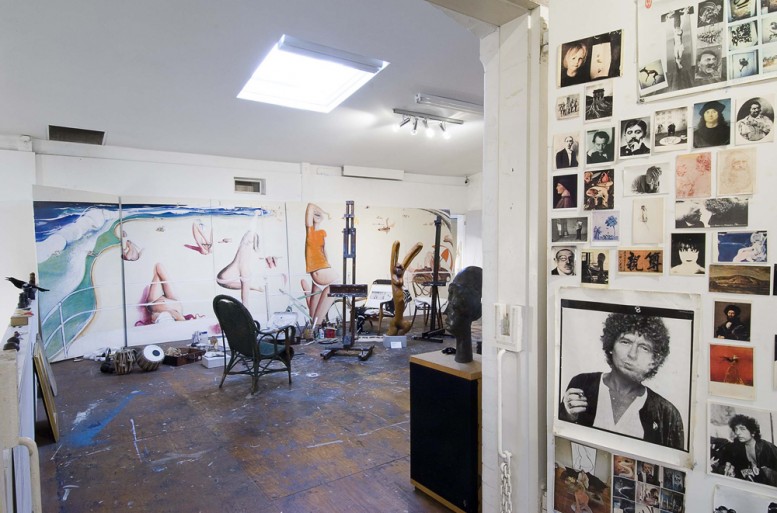 Brett Whitley's Studio
Brett Whitley's Studio
A new exhibition explores the late artist Brett Whiteley’s art and life from 1960 to 1967 when he was largely based in London. Key abstract works from this period as well as paintings from his Bathroom, Christie and London Zoo series, and the Endlessnessism monoprints of conversations with the artist Francis Bacon are featured in this exhibition at the Brett Whiteley Studio in Surry Hills, Australia. This remarkable body of work displays all the dexterity, imagination and ambition of a prodigious talent still in his 20s. On view from Jul 13, 2012 to February 13, 2013, The Brett Whiteley Studio at 2 Raper Street, Surry Hills, Australia
The Humping Pact
The Humping Pact was developed by two venture fiction entrepreneurs, Diego Agullo and Dmitry Paranyushkin, in the field of polysingularity, during a residency at PACT Zollverein center for performance and choreography in Essen, Germany. What is a venture fiction entrepreneur? Venture fiction is "a practice of creating enterprises in order to communicate ideas and not the other way round. Each enterprise proposes its own system of perception with multiple solutions. It is not there to make a statement or to generate profits. It is there to propose its own world, behavior, and episteme." Diego Agullo and Dmitry Paranyushkin's mission is to get their humpers to hump all around the world as an "aesthetic meditation on the human desire to believe in the futile and to conceive the impossible." The Humping Pact's mission is spread by a number of mediums which include exhibitions, live performances, film showings, projections, photo prints and press publications. The Humping Pact's new "mission" will premiere at Beursschowburg in Brussels on October 5 2012.
Ariel Pink Reveals New Song "Only In My Dreams"
Ariel Pink's Haunted Graffiti have revealed a new and original song from forthcoming album, Mature Themes, out August 21st on 4AD records.
Touched by Frances Goodman
(Art) Amalgamated presents Frances Goodman’s first solo show in New York Touched. Recognized as one of South Africa’s leading young artists, Goodman has become well known for her multi-media works that explore issues of female identity in ways that are often humorously dark and cryptic. By looking at everyday obsessions and behavior she explores the way people respond to our contemporary, highly materialistic society and the often idiosyncratic coping mechanisms they develop. Her work reflects a morbid ambiguity of excess and loss, a dislocation between appearance and truth. Touched is on view until August 4, 2012 at (Art) Amalgamated, 317 10th Avenue, New York
Laisvyde Salciute Exhibition
Laisvyde Salciute's new exhibition on view this month at Vyner Street Gallery is inspired by Virginia Woolf's novel Orlando. A Biography where the protagonist of the novel is not subject to gender or time constraints and lives a life of oscillating sex through the ages. This brave reevaluation of gender is one of the biggest values of the novel. Salciute says, "According to Jacques Lacan, any constant sensual and visual identity can only reach us as a gap between words and images. In this series of artwork I was interested in transforming reality into a traumatic phantasm or a dream in a dream. From random images and quotations resourced from the Internet, I have fabricated visual puns on distance, scarcity, desire and images of disintegrating identity and illusion as existing in indefinite time and space." Orlando. A Biography, a series of 26 silkscreens will be on view from July 19 to July 21, 2012 at Vyner Street Gallery, 23 Vyner Street London
Legalize It
On The American River
On The Beach
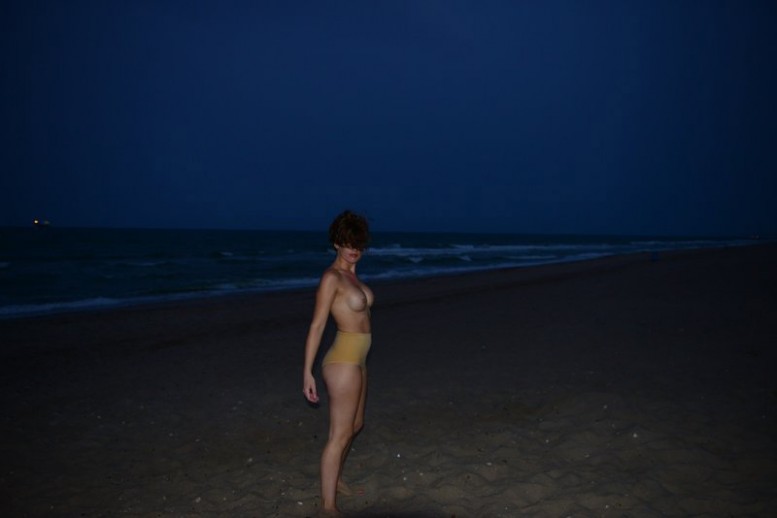 photograph by Javier Ferrer Vidal
photograph by Javier Ferrer Vidal
Marxism @ 303 Gallery
Richard Prince, You Bet Your Life, 2010
303 Gallery presents Marxism, an exhibition that examines the sociopolitical impact of the rebellious humor of the Marx Brothers - Chico, Groucho, Gummo, Harpo, and Zeppo - in relation to artwork by a gang of five contemporary artists - Marcel Duchamp, Jack Goldstein, Rodney Graham, Tim Lee and Richard Prince. The Marx Brothers are known for their subversive satire that cleverly addresses political and social issues with a touch of slapstick or a "honk honk" of Harpo's horn. Their beloved films continue to make people laugh with their particular brand of anarchic humor, where everything is taken literally and humor acts as a defense against the woes of the world. From Groucho's iconic mustache, glasses, and cigar to Chico's phony Italian accent and Harpo's squeaky walking stick, the Marx Brothers are unparalleled entertainers immortalized for their wit and use of simple props to address topics ranging from love and war to show business with a staunchly anti-authoritarian stance. Duchamp, Goldstein, Graham, Lee and Prince are similar innovators and provocateurs in the world of contemporary art, who have made work that relates to or references themes in the Marx Brothers' oeuvre. The exhibition will present works by each of the four artists as well as a large collection of historical material relating to the Marx Brothers, including films, photographs, records and props. Marxism is on view until August 3, 2012 at 303 Gallery, 547 W 21st Street
James Franco & Paul McCarthy for Rebel
A great photograph of James Franco and Paul McCarthy for McCarthy and son Damon's contribution to Rebel in the exhibition monograph co-published by MOCA Los Angeles and OHWOW.
Pas Un Autre Rimbaud Tee
Charline Formenty is a choreographer from Paris. Here she is wearing a Pas Un Autre tee featuring the young poet Arthur Rimbaud. Available here.
Happy 4th of July!
Argentine Photographer Horacio Coppola Dies at 105
Its Gonna Be A Cool Summer: An Interview with Brad Elterman
Boogie Nights at Brad's House
Brad Elterman's first photograph at the age of 16, of Bob Dylan performing on stage, started a life long love affair with photography. His images captured the last gasp of a bygone era of rock n' roll – the 1970s – the days when glamour was rare and pure and stars were stars because they were elusive and unattainable. His classic images of Joan Jett hanging out in motels and flipping off the camera, David Bowie coming out of his studio, Playboy Playmates hanging out in his Hollywood apartment pool, and more, capture moments in a snapshot style instantly recognizable as Elterman's own. And his photographs were published in every major magazine. Then he gave it all up. For three decades Elterman laid low. Over the last few years Elterman started to reemerge: he started a blog that archived his oeuvre, but also documents new moments, in 2011 he published a coffee table book called Like It Was Yesterday, and he has been having gallery shows across the world including his latest show Factory 77 in Los Angeles which opened a couple of days ago and will be open all summer. I got a chance to ask the very busy Brad Elterman a few questions about photography, Los Angeles, and some current projects he has been working on including including a new website that showcases his photographs from the 1970s and pop culture today, but is also a platform for new photographers.
Joan Jett Flipping Off The Camera
PAS UN AUTRE: Can you remember the moment you knew you wanted to become a photographer - can you remember the first image you ever printed?
BRAD ELTERMAN: My first image ever printed was a performance photograph of Bob Dylan on stage in 1976. It was also probably the instant that I told myself that I would like to make a career out of this.
AUTRE: Who were some of your biggest inspirations - not just photographers?
ELTERMAN: Helmut Newton, Ron Galella, Richard Creamer all photographers of course. My mom was my greatest inspiration. She was a painter and she thought me to create my own style. She was so supportive as long as I was happy.
Valley Chicks
AUTRE: Who was your favorite subject to photograph?
ELTERMAN: Probably Joan Jett. She always has style and so cool to hang with and of course to photograph. Talent and style, you just can't beat that.
AUTRE: What was your impression of Los Angeles then (1970s) and now?
ELTERMAN: I loved L.A. during the 70's, but I did not know the rest of the world. Since traveling the world now, I still always come back to Los Angeles. The weather, the light, and all the characters. It really is one of the most creative and comfortable cities in the world. Not the culture of Pairs and New York, but you can n't have everything.
AUTRE: What are some of your thoughts as you look through the view finder?
ELTERMAN: It's hard to believe that I am taking photos again after a more than two decade break. During my silence, there was nothing to photograph and the internet did not exist. So when I look though the view finder I am sort of in disbelieve. It's a fun feeling and I like it.
Duran Duran At The Riot House
AUTRE: What is Factory 77 and what can we expect from your current show?
ELTERMAN: Factory 77 just launched. It's my 70's photos, my new photographs of pop culture today and most importantly it is a showcase for all of the amazing young photo talent out there today. I have met so many talented photographers via the internet and I enjoy sharing stories with them. Erica Lauren, a Los Angeles based photographer is the editor and I will photo edit. We would love to showcase young rock bands who embrace the internet for exposure. No performance photos. I want the pictures to be raw and captivating. It will be great fun.
AUTRE: Most exciting plans for the future?
ELTERMAN: I am part of Vogue Italia's Photo Vogue this summer at 10 Corso Como in Milan. It is an exhibition from 101 photographers. The collection is amazing and there is some incredible talent. My photo is entitled "Valley Chicks" and I took it back in 1977 on a roll of black and white film. My Factory 77 exhibition photographs at Kana Manglapus Projects, Venice is up all summer and I plan on spending time at the gallery. It's going to be a cool summer.
Brad Elterman's exhibition Factory 77 will be on view until Spetember 10, 2012 at Kana Manglapus Projects. Follow Brad Elterman on his tumblr page. Text by Oliver Maxwell Kupper for Pas Un Autre
Exhibition view of Factory 77 with a photograph of Steve Jones of Sex Pistols in Brad's Pool
Rudolf Stingel @ Sadie Coles
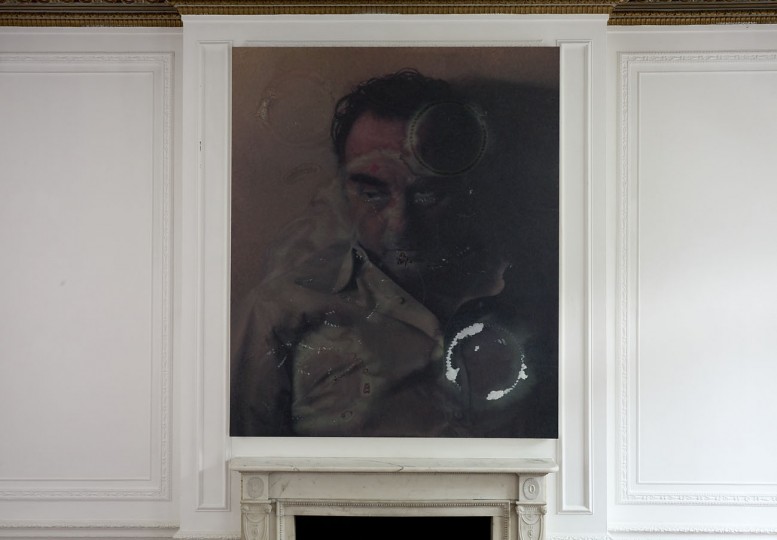 Rudolf Stingel, Untitled, 2012 oil on canvas, 243.8 x 204.5 cm / 96 x 80 ½ in, Copyright the artist, courtesy Sadie Coles HQ, London
Rudolf Stingel, Untitled, 2012 oil on canvas, 243.8 x 204.5 cm / 96 x 80 ½ in, Copyright the artist, courtesy Sadie Coles HQ, London
On view for only a couple of more days, Rudolf Stingel’s 2012 exhibition with Sadie Coles HQ takes place in a Grade II-listed Georgian townhouse whose interior looks back to French palatial architecture of the Renaissance. In the chandeliered first-floor ballroom, Stingel has installed a specially-designed carpet which spreads throughout the space. This site-specific installation is the latest in a twenty-year series in which the artist uses expansive carpets to dramatise and collapse the relationship between painting and its architectural contexts. Untitled (2012) hangs alone in an alcove in the manner of an altarpiece or devotional icon. This monumental self-portrait is painted from a photograph of Stingel illuminated by candlelight, which was taken by photographer Roland Bolego. On view until 04 July 2012 Sadie Coles HQ (off-site), 9 Grosvenor Place London SW1
John Currin New Paintings @ Sadie Coles
[DETAIL] John Currin, Lake Place, 2012, oil on canvas, 178.1 x 152.7 x 2.9 cm / 70 ⅛ x 60 ⅛ x 1 ⅛ in Copyright the artist, courtesy Sadie Coles HQ, London
In his latest show at Sadie Coles HQ, John Currin presents a new series of paintings centred on the female nude. These latest works combine the explicitness of his pornographic paintings of the last five years with a new level of psychological realism. In contrast to those works, which drew upon 1970s magazines, the majority were painted directly from life in the artist’s studio. They show reclining women who appear ambiguously caught between the art-historical trope of the female nude and an appearance of earthy naturalism. On view until August 18, 2012, atSadie Coles 69 South Audley Street London W1
[AUTRE TV] Vanishing Point by Augustin Doublet
Of his six-minute black-and-white short Vanishing Point, French director and writer Augustin Doublet says, “It’s all about creating a maze of memories and fancies out of this endless labyrinth that you find in Brooklyn. I refer to the subway tracks, to the shades...I was trying to get behind the skin of the city, and to explore this kind of dynamic between dream and reality. So to do that, I thought that to make a portrait of an artist, a woman, was the right way to do it. I tend to like to tell stories about women. And so this kind of descent into her own broken relationships, her broken dreams, was dynamic. I think that was the concept behind it. And one could say that there is something about masochism, which has a very strong link with the practice of art... the practice of painting... I think we take inspiration from our scars. I was interested in the remains of the ink, the remains of internal scars, psychological scars... how the trauma manifests itself into shadows of ink."
Vanishing Point paints a darkly stunning portrait of an artist living in Brooklyn. The film is bleak, discordant, smacking with violent urgency—and yet there is, at the same time, a certain fragility, a delicate quietness underneath its rough exterior. Perhaps this is borne out of Doublet’s own experience living in the ever-growing and changing neighborhood of Bushwick, Brooklyn; watching the juxtaposition between the grittier, rougher “low-life reality,” as he calls it, and the burgeoning artist’s community that has begun to emerge in past years.
Since his arrival in New York, Doublet has written, directed and produced several of his own short films. Initially fascinated by the “harshness, dirtiness, and loose eroticism” of the New Hollywood cinema of the 1970s, he says, “My imagination and my desire are very related to the location and environment I’m in.” Originally from the Belleville area of Paris, Doublet has been living for three years in The Schoolhouse (the interior of which is shown in Vanishing Point), a unique three-story red brick building in Bushwick that has worn multiple hats since its establishment in 1883—it functioned as an elementary school until 1945, when it was sold and used as a manufacturing space; then it was abandoned and finally converted into artists’ living and working spaces in the 1990s. Now, each floor houses an array of creative individuals—musicians, painters, poets, filmmakers and photographers who often collaborate together (Vanishing Point is set to the spoken words of Mariette Papic, a poet and fellow Schoolhouse resident who Doublet commissioned for the project). About New York, he says, “…if you’re able to project yourself, your energy and your ideas on the city and break through the glass, [it] gives you back so much…”
Text by Annabel Graham for Pas Un Autre







